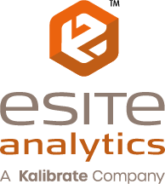Have you heard? Big data is officially a big deal. You don’t need to read the hundreds of comments on The New York Times or keep up with the Obama administration’s big data initiative to know this buzzword has found its way into boardrooms and conference centers across America.
As the media hype around big data is reinforced by the emergence of countless “big data” tech firms, it’s clear a lot has changed.
Or has it?
There’s no question the volume of information collected has reached astonishing levels. (One 2011 study found that the typical corporation houses 200 terabytes of data, with 90% of it created in the past two years.) To hear the blogging community tell it, harnessing the full potential of those larger stores is yet to be mastered. At eSite we know this is simply not true.
As more organizations are catching on to the value contained in customer data, many seem to overlook the fact that transforming massive data sets into actionable, profitable observations requires more than just catch-phrase technology. To turn big data into big insights, businesses need to incorporate a spatial component. This is especially true for retailers, restaurants, financial institutions and healthcare companies.
Consider the following examples:
- In testing out new site selection tools, a health network immediately identifies new territories in one market with a combined $400,000 in annual revenue potential. With medical offices in cities around the world, the company goes on to uncover millions more in true potential by applying the same spatial analysis techniques to the rest of its markets.
- A retailer whose clientele prefers traditional catalog sales uses household-level data to improve its mailing list and experiences a 10% surge in sales with the first mailing.
- A national bank discovers it can avoid hundreds of millions of dollars in losses by analyzing the demographics and psychographics around a potential investor’s selected sites—making it easier to predict when borrowers are likely to default on loans.
These and other eSite success stories occurred well before everyone started talking about the power of “big data.” All were accomplished using spatial analysis of locational elements—anything from zip codes to distances from other like sites—to guide these critical business decisions.
Whether you’ve had a predictive analytics team for years or are just getting started, the key to success is not, as many would have you believe, merely having the deepest database or fastest algorithm. None of that will matter if the technology isn’t matched by human analysis that expertly turns the right data into profitable insights.
